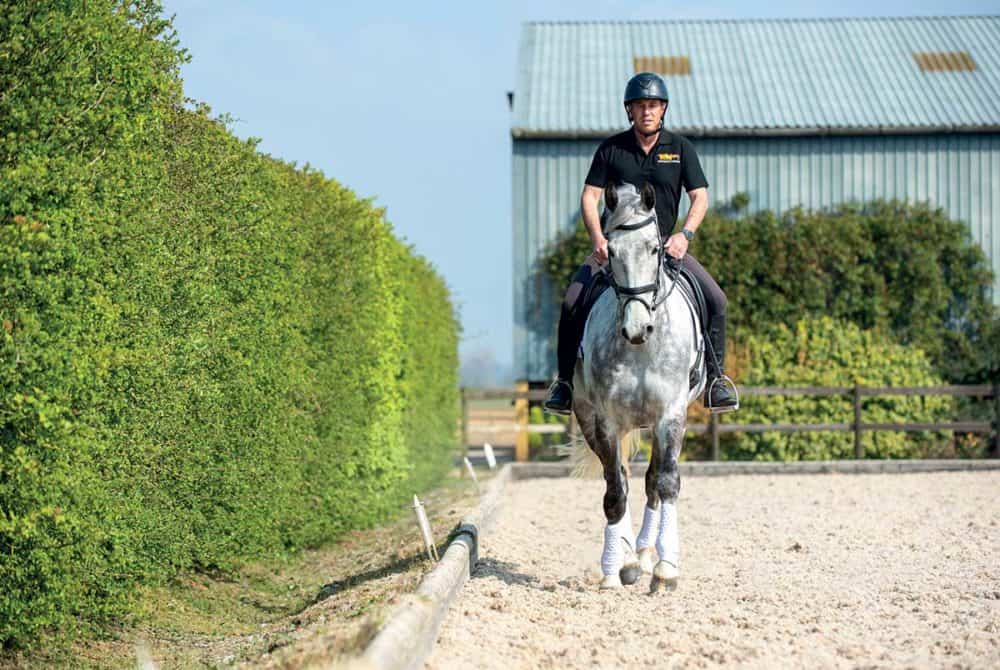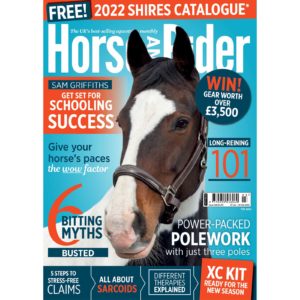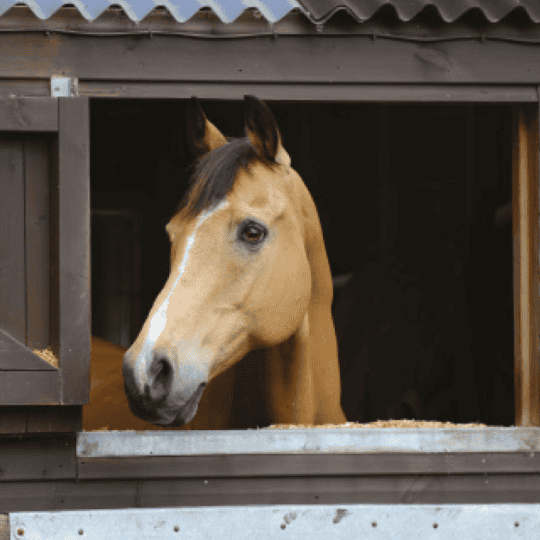Learn how to transition from a warm-up to a schooling session with Sam Griffiths
Posted 24th January 2022
At the end of a long, low and loose warm-up, how do you transition to serious schooling mode? Sam Griffiths has the perfect exercises to make the transition clear

No matter the horse you’re riding, or the goals you’ve set, keeping your warm-up purposeful is key to making the most of your schooling session. But for a lot of riders, switching from the early stages of a ride to the serious work can feel quite a jarring transition.
That’s why it’s important to have a couple of all-purpose exercises in your toolkit, which can be used to shorten your horse’s frame, elevate his stride, and usher him into more of a competition outline.
Make it count
Before you even think about the shift into the main body of your training session, you need to understand how to put together a practical warm-up.
The goal of your warm-up is threefold – loosen your horse’s muscles so he’s safely prepared to work, get his brain on side, and establish the basics, including rhythm and straightness, so you can build on them as you begin adding tougher exercises.
Your warm-up will vary depending on what your horse needs – you may discover he needs longer than other horses, or he does best if he canters quite early on – but generally speaking, they all follow a similar blueprint. After an initial walk, which can be done in or out of the arena, pick up a relaxed, easy trot, focusing on moving him forward in a rhythm. Don’t fuss with your horse’s head at this point – instead, count out his rhythm and allow him to stretch and loosen up. Do this on both reins, incorporating sweeping changes of direction, and then repeat in canter, working in a light or deep seat.
After this, I like to move on to some counter-canter, but whether you opt to do the same will depend largely on your horse’s experience. The warm-up is never a time to teach a new skill – your goal is for your horse to feel loose, supple and confident, ready to get stuck into the training part of your ride, so stick to exercises he knows and is confident with at this stage.
Exercise one: suppling circles
Push your horse’s quarters out on a 20m circle to improve bend and balance.
What it does
Pushing your horse’s quarters off the trajectory of the circle while keeping his shoulders in place encourages him to activate and engage his inside hindleg. This allows you to then build a bigger, more extravagant trot, which is beneficial no matter what level you’re at, but is particularly helpful for working on medium and extended paces.
How to ride it
Begin on a 20m circle in a positive, forward trot, with just enough bend in his body to match the bend of the circle. This is usually less than you’d think and, on a 20m circle, he’ll be very nearly straight from poll to tail.
Next, work on moving his quarters off the line of the circle without making any changes to the trajectory and bend of his front end. Use your inside leg behind the girth to push his quarters over, but keep your outside leg secure and in place on the girth to encourage him forward and control his shoulder. Your outside rein is extra important here – you’ll use it to hold and balance your horse and make sure he doesn’t overbend to the inside. Basically, you’re creating an exaggerated inside leg to outside rein connection, which you’ll be able to use throughout your schooling to repackage your horse whenever things start to feel a bit disorganised.
This exercise is often quite a challenge at first, especially if your horse is inexperienced. He might think you’re asking him to move his entire body sideways or change his bend completely. If this happens, check in on the clarity of your position and aids – are you sitting centrally and in balance? Is your inside leg clearly asking for his quarters to move? Is your outside rein stable and secure?
Top tip
When it comes to bending exercises, it’s crucial to make sure you spend plenty of time working on each rein – and don’t neglect your horse’s less supple side.
Want to read the rest of this article and find out what other ways you can improve your transition from a warm-up to schooling? Then grab your copy of Horse&Rider February on sale 27 January 2022











